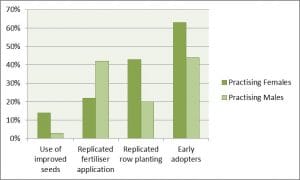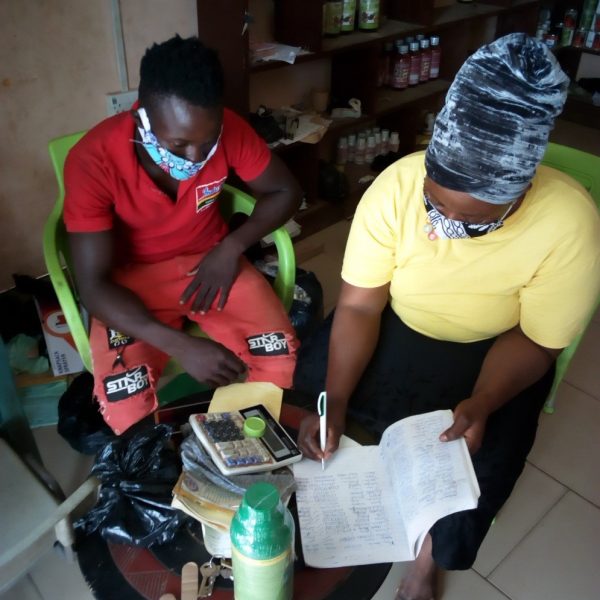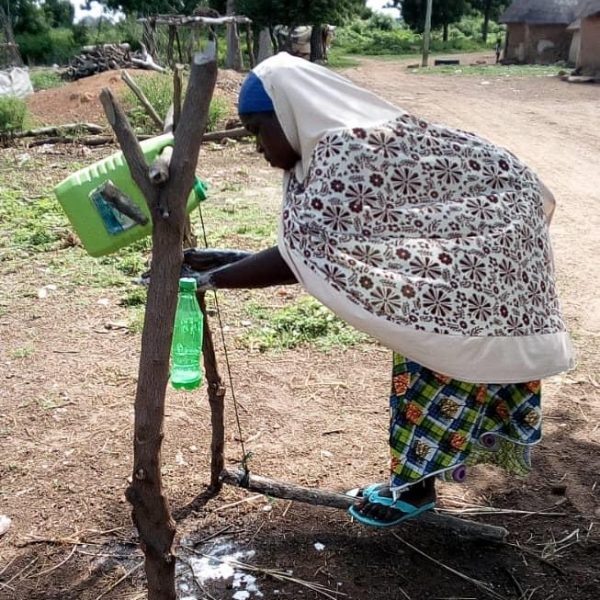The Market Development Programme for Northern Ghana (MADE) is a four-year programme funded by UKAid. MADE contributes towards the achievement of DFID Ghana’s objective to promote growth and reduce poverty in the 63 districts covered by the Savannah Accelerated Development Authority (SADA). The expected impact of the MADE programme, spanning 2013-2018, is to stimulate economic growth and reduce poverty in the Northern Savannah Ecological Zone.
MADE uses the market systems development approach to achieve a positive change in the annual real incomes of over 78,000 women and men smallholder farmers (SHF) and small-scale entrepreneurs engaged in its target market sectors. Crucially, MADE only supports financially self-sustainable initiatives that offer social returns of a scalable nature.
In Ghana, it is generally accepted that women produce crops efficiently. However, there is lack of evidence to substantiate this claim: this case study provides data that shows that women are more efficient than men in rice production if they have equal access to improved productive inputs and resources. The case study then explores avenues for sustainably improving access to productive resources for women.
MADE’s approach: field demonstrations to identify constraints to women smallholder out-growers in the rice sector
To identify the constraints faced by women out-growers, MADE supported sub-facilitators to mount and manage evidence-based demonstrations in the outreach communities of aggregators with the aim of demonstrating the commercial value of carrying out well-managed demonstrations, and to showcase to farmers the value of using certified seeds, good agronomic practices (GAP) and improved inputs. The partner aggregators were expected to learn from these sub-facilitators, identify practices that benefit their business and establish and manage their own evidence-based demonstrations using their choice of service providers. Farmers were expected to learn from the demonstrations and replicate the practices on their own plots for increased yields. MADE shared the financial risk and provided technical assistance for setting up the pilot demonstrations.
Did you know…? In Ghana, women are about 70% of food producers, yet they have limited access to productive resources. Women grow substantial amounts of staple foods including rice, but they experience low yields on their own farms because of a lack of access to cash and credit facilities without which they cannot acquire modern yield-increasing inputs of production. Differences in productivity between men and women have been shown to be due to differences in the use of productive inputs (directly linked to the possibility of accessing such inputs) rather than in differences in the efficiency or management styles of men and women.
The demonstration
Women form about 40% of rice smallholder farmers working with MADE’s rice sector partner aggregators. In this case study, we used the observation data of Nuoyong Business Empire, a MADE sub-facilitator who ran demonstrations for AE farms Enterprise (a rice aggregator), to showcase the relative performance of men and women smallholder rice out-growers during the demonstrations. Noting the better performance of women from data, we explore the constraints that hinder production by women and discuss the way forward for development partners and aggregating firms. The demonstrations ran in eight communities in the Upper West Region. They involved one lead farmer per demonstration plot in eight demonstration plots, four Agricultural Extension Agents (AEAs), 190 men and 321 women smallholder farmers. These farmers were shown good agricultural practices, including use of certified seeds, planting in rows, fertilizer micro-dozing and timely application of fertilizer, and weed control in paddy fields. In each of these critical stages more women (average of 64%) than men participated. In the demonstrations, women were mostly engaged in sowing and in the hand-pulling of weeds, and fertilizer application while men did hoe-weeding and chemical spraying. Due to high constraints on women’s labour time such as household activities, field activities were fixed on days and at times that were convenient to women, hence their high participation in all activities.

The findings: women out-growers outperform their men counterparts – as long as the purchase of inputs is not required
Results from the demonstrations provide evidence that women are fast learners and early adopters of new technologies in rice production (Figure 1 below), when such input technologies are not to be purchased: indeed, adoption rates for women surpass those of men in all respects bar the fertiliser application, which requires prior purchasing.
For inputs such as fertilizer which require purchasing before application, women did not perform as well as men. Women tend to perform better in the application of inputs that do not require purchasing, such as use of improved seeds and replication of row planting. Women participated more actively in learning sessions and tended to adopt recommended practices on their own farms more frequently than men– they represented 75% of early adopters. This observation indicates that given the same productive inputs and resources as their male counterparts, women will increase production and productivity by a larger margin.
Replication of lessons learnt
More women than men out-growers replicated the lessons that they learnt on their own farms. Of the 309 farmers who replicated at least 1 practice, 208 (67%) were women. Over 75% of the 191 farmers who planted rice in rows were also women. A closer look at the performance and adoption rate of male-only and female-only data shows remarkable increases in the percentage of men who replicated the use of fertilizers on their own farm, while a smaller percentage of women undertook fertilizer applications in their farms.
Use of improved seeds and fertiliser application
Improved seeds were supplied by the aggregator on first come first serve basis. 88% of the receivers of improved rice varieties were women: according to reports by aggregators, women do tend to put in comparatively early requests for improved varieties compared to men. Their requests are often met because of their reliability in increasing productivity and high rates of input credit repayment, which give supplying aggregators an almost assured return for their investment.

Also, as shown in Figure 2, of the 208 women who replicated at least 1 practice from the demonstration, only 22% were able to access and apply fertilizer on their farms against 42% of men who replicated fertilizer application on their farms.
Accessing inputs: the main challenge to women out-growers in northern Ghana
Despite being first adopters of good agronomic practices, which is an indication of a good potential for rice productivity improvement by women out-growers, rice production by women across the region is lower than by men. Women singled out inadequate access to inputs such as certified seeds, fertilizer and other chemicals as their main challenge, and the data we collected backs this impression. This is because they either do not have finance to purchase these or the means of transport to move such goods from where they are sold to their farms. Their male counterparts could however transport such goods easily on their bicycles or motorbikes.
These findings are consistent with Yiadom-Boakye’s study on the early adoption of improved seeds and timely application of agronomic practices and the constraints related to access to inputs faced by women. In a survey to examine the gender differentials in technical efficiency of smallholder rice farmers, the authors found that men, owning to their ability to access credit or finance for the acquisition of farm inputs, were more technically efficient than women who had less access to these inputs. They concluded that supplemented expenditure on inputs such as fertilizer and improved seed would positively affect gross revenue generated by the resource-poor women farmers.
Story from the field: Gertrude Zaato and her fellow female smallholder farmers are excellent rice out-growers
The case of Gertrude Zaato (see Picture 4) and five other women in the Vuumo Women Group in Karni reaffirm the pattern observed in our analysed data. They are rice out-growers for AE Farms Enterprise. These women found the rice demonstrations to be useful sources of learning: they did not even wait to observe the yield increases of the demonstrations before adopting the recommended practices on their own paddy fields.
“Aside from getting good quality seed and good land preparation, I have learned that to maximize yields, I need to plant at the recommended plant spacing, choose the right type and quantity of fertilizer, bury my fertilizers and also control weeds at the right time” (Gertrude Zaato on the demonstration plots)
During MADE’s monitoring activities, she again indicated her preference for planting in rows to the traditional way of planting because aside from the reasons provided for row planting during the demonstration, she has personally observed an ease in weeding and movement. Gertrude and friends also observed that plant growth is better in the row-spaced field than the usual broadcast fields. With this knowledge and technology in hand, supported by the provision of production inputs by the aggregator, Gertrude recorded about a 110% increase in rice yield (3300 kg/ha) than previous years (1560 kg/ha). Yield increases of about 176% were also recorded by David Janet, whose yield increased from 1250 kg/ha in the 2014 cropping season to 3450 kg/ha in the 2015 growing season.
So how can aggregators capture the benefits of involving women better and more?
This case study provides evidence on the fact that it makes commercial sense to invest in the training of women out-growers and the provision of input credit to women. There is a high certainty in the recovery of the cost of investment from women, as women tend to follow best practices and genuinely need the inputs for production.
Below are four example activities led by aggregators which MADE can facilitate:
- Bussing women to and from training sites: bussing provides means of transportation to women, who often do not have bicycles or motorbikes to travel on. Women need to gain knowledge from participation in training. They are reliable suppliers and quick to learn. Among the commercial benefits aggregators can derive from this are:
- Increase in the number of knowledgeable / productive women out growers, thereby increasing the supplier base
- High production levels and supply of produce for the aggregating company
- Lower costs of aggregating due to higher supply levels, translated in higher profits for aggregating firms
- Providing production inputs such as ploughing, fertilizers, improved seed varieties on a credit basis to women: as this study shoes, women are relatively more productive as a result of their adherence to GAP. They are also more reliable in repayment of inputs credit after harvest: they are a low risk investment. Below are some example commercial benefits for aggregators:
- Reduced risk of investment results in higher returns for aggregators
- Efficient productivity results in high end-produce which increases produce supply, gives time for grading and quality assurance with net high grade in aggregating inputs.
- High prices for the aggregated inputs and good net income to aggregating firms
- Providing training on GAP to women: Women are fast adopters of GAP. They also have good knowledge of household and market produce requirements, and check for quality assurance during the production cycle. These are some illustrative commercial gains:
- Women produce efficiently through timely application of input resources
- Aggregator receives efficient and skilled labour from the women trained in GAPs
- Aggregator lowers input costs due to efficient input application (less waste)
- Aggregating firm saves time on production, gets good quality end produce with filled grains and kernels
- Purchasing produce from women producers: Women produce goods in low quantities and cannot access the huge markets down South due to high cost of transportation and risks associated with small volumes. By buying from these women, aggregators increase the volumes of their aggregated produce. Commercial benefits of this include:
- Women have increased market access and bring prosperity
- Aggregating business have a reliable source of supply
- Assured quality of goods due to good knowledge of household product grades, less investment in sorting and grading.
You can download a pdf version of this case study.



